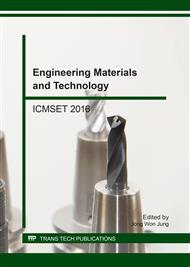p.198
p.209
p.214
p.220
p.225
p.231
p.236
p.242
p.248
Effect of Ni Plating on the Interfacial Stability of Multi-Layered Ni-Plated-Cu/Al/Ni-Plated-Cu Clad Composite
Abstract:
In this study, electro nickel coating was applied and its effect on the interfacial stability and cracking behaviors were investigated in the multi-layered Ni-plated-Cu/Al/Ni-plated-Cu clad composite. Ni plating with 5μm thickness on the Cu sheet before cladding does not form a continuous layer between Cu and Al because of its low ductility. Ni layer covers the part of the Cu/Al interface. In the interface region without Ni layer, CuAl2, CuAl and Cu9Al4 were found to be formed after annealing whereas Al3Ni2 and Al3Ni were found to be formed in the interface region with Ni layer. After bending, interface crack developed initially in the interface region with plated Ni layer. On the other hand, the interface region with no Ni layer, no interface cracks were found to formed, suggesting that the bonding between Al and Ni is not strong enough. After interface crack formation, cracks developed in the Al layer, which may lead to the fatal fracture.
Info:
Periodical:
Pages:
225-230
Citation:
Online since:
June 2017
Authors:
Keywords:
Price:
Сopyright:
© 2017 Trans Tech Publications Ltd. All Rights Reserved
Share:
Citation:


